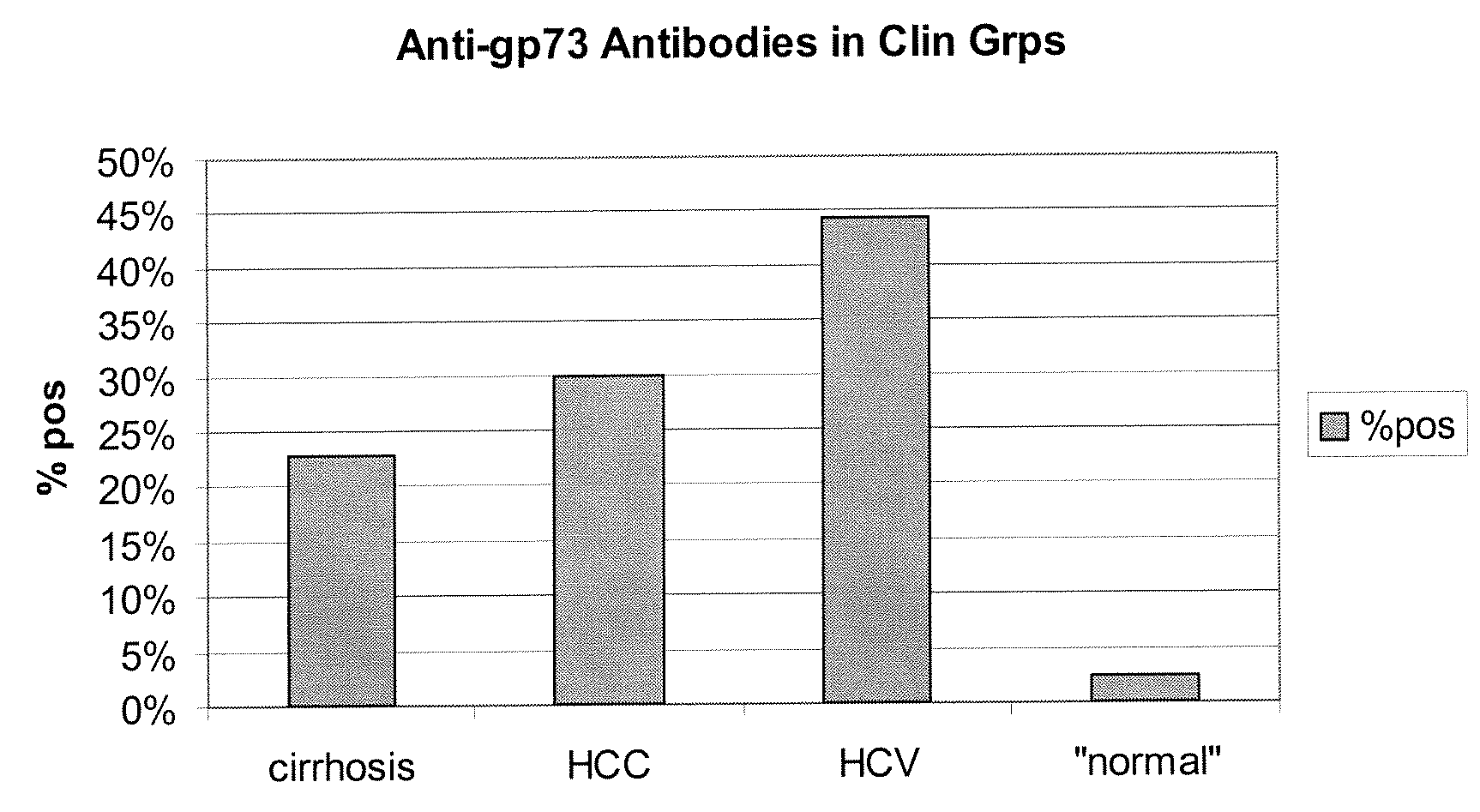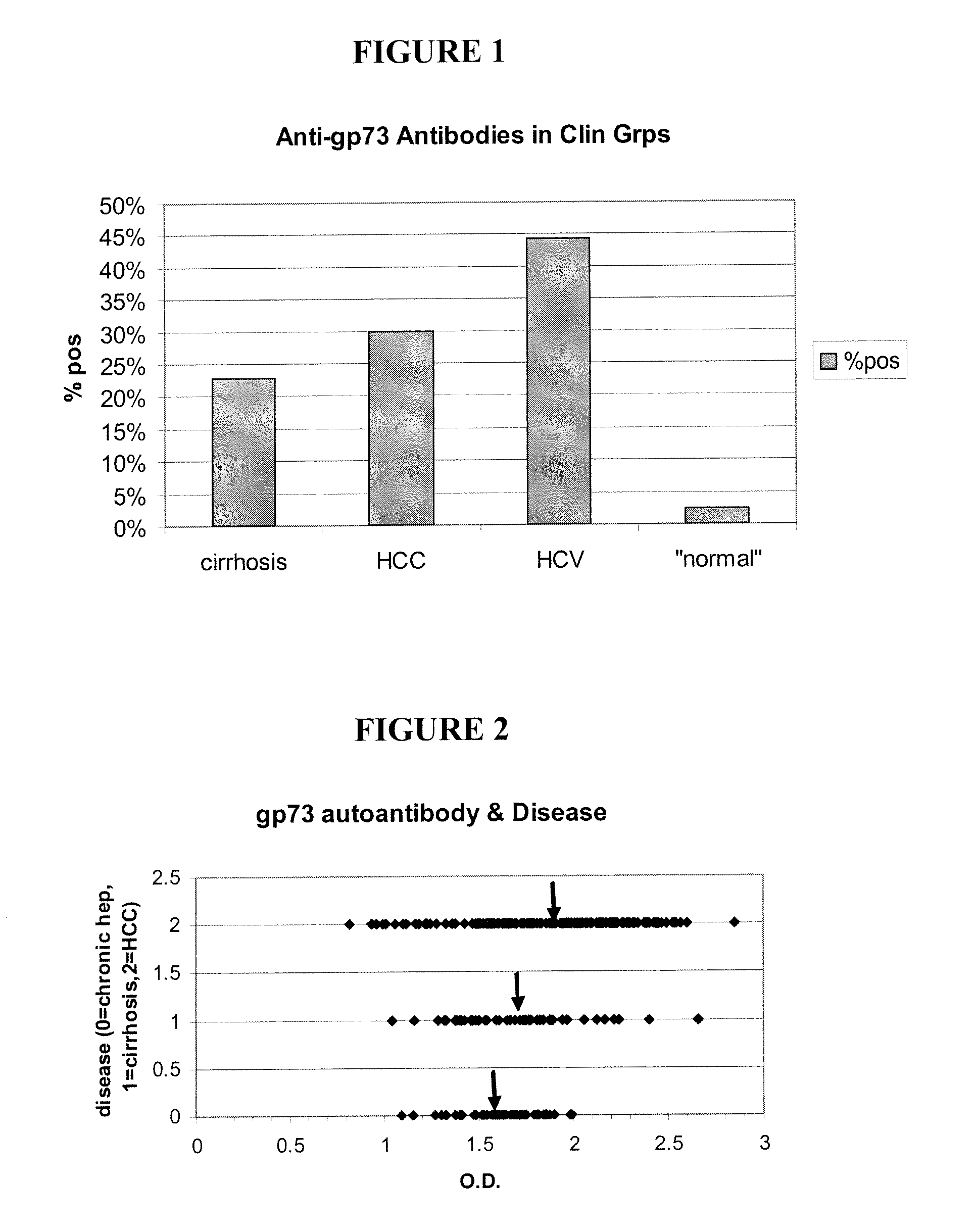Methods and assays for detecting GP73-specific autoantibodies
- Summary
- Abstract
- Description
- Claims
- Application Information
AI Technical Summary
Benefits of technology
Problems solved by technology
Method used
Image
Examples
examples
Material and Methods
GP73 Protein
[0069]An inducible GP73-expressing plasmid (BACG81 obtained from St. Louis University, St. Louis, Mo.) was grown by standard methods. Briefly, glycerol stock was streaked on LB / amp (Luria-Bertani broth / Amplicillin) agar plates. A single colony was selected and inoculated in LB broth. Cells were grown and expanded until desired cell density was obtained. IPTG (isopropyl-1-thio-β-D-galactopyranoside) was added and cells were incubated for approx 4 hours. The cells were then harvested by centrifugation. The presence of GP73 in the harvested cell pellet was confirmed by SDS PAGE analysis. Recombinant His-tagged GP73 was isolated using standard techniques. Basically, the GP73 was extracted by the pellet under denaturing conditions and the GP73 protein purified from the lysate by passage over a nickel column. The protein was eluted from the column using an imidazole buffer solution. The purified recombinant GP73 protein was freed of imidazole by extensive d...
PUM
 Login to View More
Login to View More Abstract
Description
Claims
Application Information
 Login to View More
Login to View More - R&D
- Intellectual Property
- Life Sciences
- Materials
- Tech Scout
- Unparalleled Data Quality
- Higher Quality Content
- 60% Fewer Hallucinations
Browse by: Latest US Patents, China's latest patents, Technical Efficacy Thesaurus, Application Domain, Technology Topic, Popular Technical Reports.
© 2025 PatSnap. All rights reserved.Legal|Privacy policy|Modern Slavery Act Transparency Statement|Sitemap|About US| Contact US: help@patsnap.com



